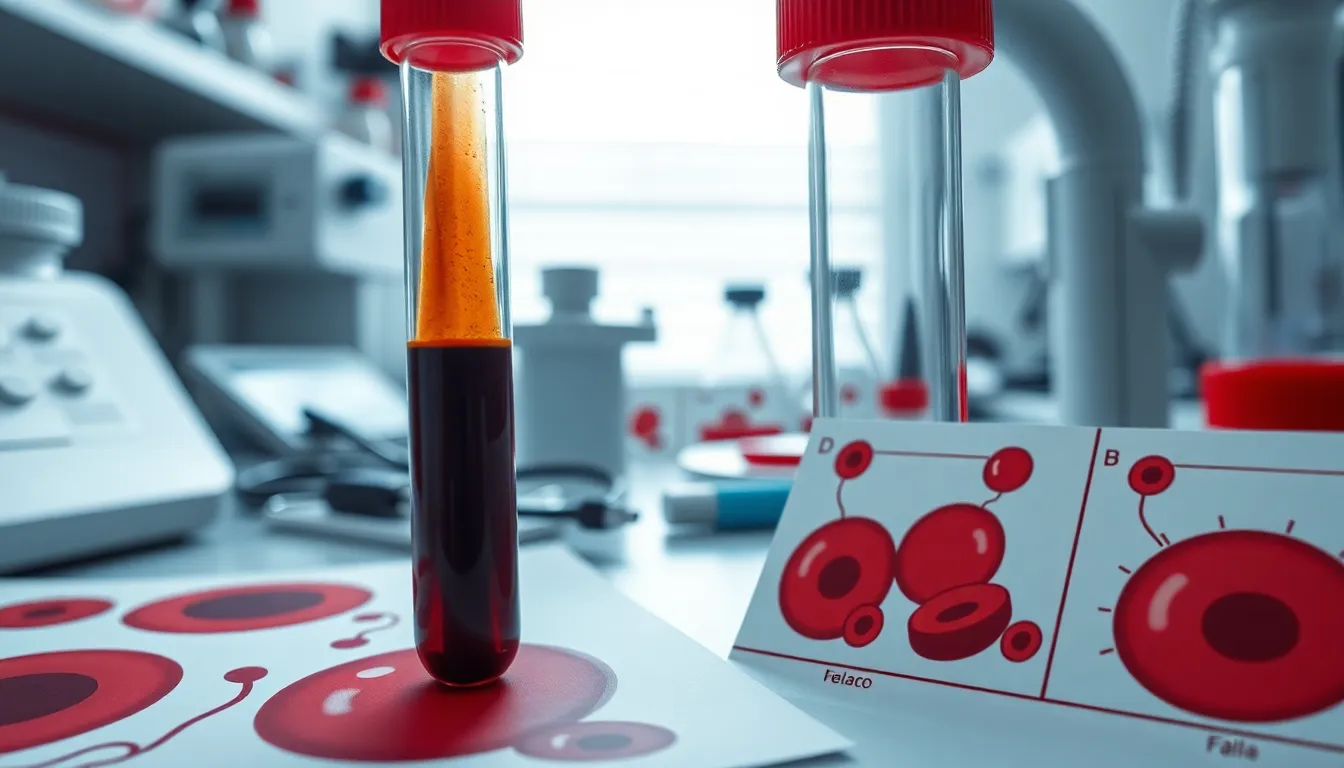Table of Contents
ToggleSeeing brown blood can be alarming, but it’s important to understand what it might indicate. Blood color can vary due to several factors, including oxygen levels and the presence of certain substances. While red blood is typical, brown hues often arise from oxidation or the breakdown of hemoglobin, leading to confusion and concern.
This article delves into the reasons behind brown blood, exploring potential causes and what they might mean for health. From menstrual cycles to underlying medical conditions, understanding the nuances of blood color can help individuals recognize when to seek medical advice. Knowledge is power, and being informed can ease worries about this unusual occurrence.
Understanding Blood Color
Blood color is primarily influenced by the amount of oxygen it carries. Bright red blood indicates high oxygen levels, while darker red or brown blood signifies lower oxygen content. Significant factors influencing blood color include:
- Oxygen Levels: Increased oxygen in blood leads to bright red hues. Decreased levels result in darker shades.
- Hemoglobin Breakdown: As blood ages or undergoes certain conditions, hemoglobin can oxidize, causing a brown appearance.
- Menstrual Cycles: During menstruation, older blood might be expelled, appearing brown due to oxidation.
- Medical Conditions: Certain health issues may alter the way blood looks. Conditions such as venous stasis or specific infections can lead to unusual blood colors.
Understanding blood color plays a crucial role in assessing health. Observing significant changes warrants medical consultation for further evaluation.
Causes of Brown Blood

Brown blood can result from several physiological factors. Understanding these causes helps in identifying possible health implications.
Dehydration Effects
Dehydration leads to concentrated blood, which can appear darker or brownish due to higher viscosity. When fluid intake decreases, the body retains water and reduces urine output, concentrating the blood and affecting its color. Symptoms like dry skin, dizziness, or fatigue often accompany dehydration, indicating a need for increased fluid consumption.
Hemoglobin Breakdown
Hemoglobin breakdown is a natural process that occurs as red blood cells age. When red blood cells degrade, they release iron and other components into the bloodstream, leading to a change in color. This process can be influenced by several conditions, including chronic illnesses, liver disease, or excessive exercise, where the body experiences a faster turnover of red blood cells. The resulting darker color may signal a need for medical evaluation, especially if accompanied by other symptoms.
Presence of Other Substances
The presence of other substances can also contribute to brown blood. Infections, certain medications, or exposure to specific toxins can affect blood characteristics. For instance, the presence of bilirubin, a byproduct of red blood cell breakdown, can appear when the body struggles to process it effectively, often resulting in darker blood. Awareness of recent medications or health changes can help determine the cause when encountering unusual blood color.
When to Seek Medical Attention
Experiencing brown blood can indicate underlying health issues. Individuals should seek medical attention if they observe brown blood accompanied by the following symptoms:
- Unusual menstrual patterns: If the brown blood appears regularly instead of typical red blood during menstruation, it may signal an issue that requires evaluation.
- Severe abdominal pain: Intense or persistent abdominal pain combined with brown blood warrants immediate medical consultation.
- Heavy bleeding: Significant alterations in menstrual flow, especially heavy bleeding beyond normal limits, necessitate assessment by a healthcare provider.
- Foul-smelling discharge: Any accompanying unusual odor in discharge combined with brown blood may indicate an infection or other medical concern.
- Dizziness or fainting: Experiencing dizziness, lightheadedness, or fainting spells along with brown blood can reflect a serious condition that demands prompt evaluation.
Observing any signs of infection, such as fever or chills, alongside brown blood also requires immediate medical consultation. Individuals should prioritize seeking advice from a healthcare professional to ensure proper diagnosis and treatment.
Diagnosing the Issue
Diagnosing the reason behind brown blood involves a thorough evaluation of symptoms and potential causes. Healthcare professionals often consider various factors when assessing this condition.
- Medical History: Reviewing personal and family medical history aids in identifying underlying conditions affecting blood color.
- Physical Examination: Conducting a physical examination helps detect signs of dehydration, infection, or other health concerns.
- Blood Tests: Performing blood tests measures hemoglobin levels, assesses oxygen levels, and detects the presence of bilirubin or other substances influencing blood color.
- Ultrasound or Imaging: Utilizing ultrasound or imaging techniques allows a closer look at reproductive organs, identifying abnormalities or conditions affecting menstrual health.
- Symptom Analysis: Analyzing associated symptoms, such as menstrual irregularities or pain, provides crucial insights that guide diagnosis.
- Urinalysis: Conducting urinalysis can reveal information about hydration levels and the presence of substances that could affect blood color.
Prompt medical evaluation is essential when brown blood appears, especially if accompanied by severe symptoms. Early diagnosis ensures appropriate management and addresses any potential health concerns effectively.
Treatment Options
Treatment options for brown blood primarily focus on the underlying causes contributing to this color change. Understanding specific conditions and their implications aids in determining the appropriate management steps.
- Hydration: Increasing fluid intake helps address dehydration, which can concentrate blood and alter its color. Optimal hydration can normalize blood appearance over time.
- Hormonal Therapy: For individuals experiencing brown blood from menstrual cycles, hormonal treatments may regulate menstrual patterns and reduce excessive bleeding. Healthcare providers often evaluate the suitability of birth control methods or hormone replacement therapies.
- Medications: When brown blood results from medications or toxins, clinicians may adjust prescriptions or suggest alternatives to alleviate symptoms. Consultation with a healthcare professional is crucial to ensure safe medication management.
- Surgical Intervention: In cases where brown blood indicates more serious conditions, such as ovarian cysts or fibroids, surgical procedures may be necessary. These interventions aim to remove problematic growths or address anatomical issues.
- Dietary Changes: Nutritional adjustments may enhance overall blood health. Foods rich in iron and vitamins can support healthy blood production, while antioxidants help mitigate oxidative stress impacting blood color.
- Regular Monitoring: Monitoring symptoms and blood changes through routine check-ups aids in early detection and intervention. Regular evaluations help maintain overall health and detect any developing issues.
Consulting healthcare professionals for tailored treatment strategies focused on specific causes promotes effective management of brown blood concerns.
Brown blood can be concerning but understanding its causes can alleviate worries. Factors like oxygen levels and hemoglobin breakdown play crucial roles in blood color. While some changes may be normal, significant alterations warrant medical attention.
It’s essential to monitor accompanying symptoms and seek professional advice when needed. By staying informed and proactive about health, individuals can navigate these changes effectively. Knowledge empowers better health decisions and ensures timely interventions for any underlying issues.








